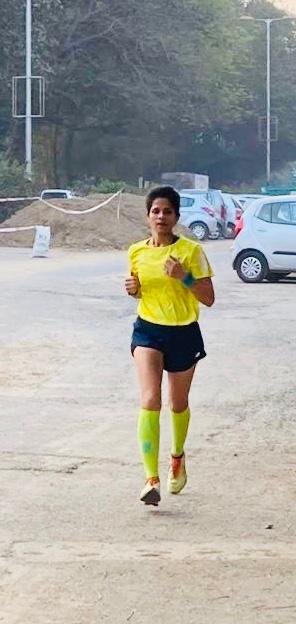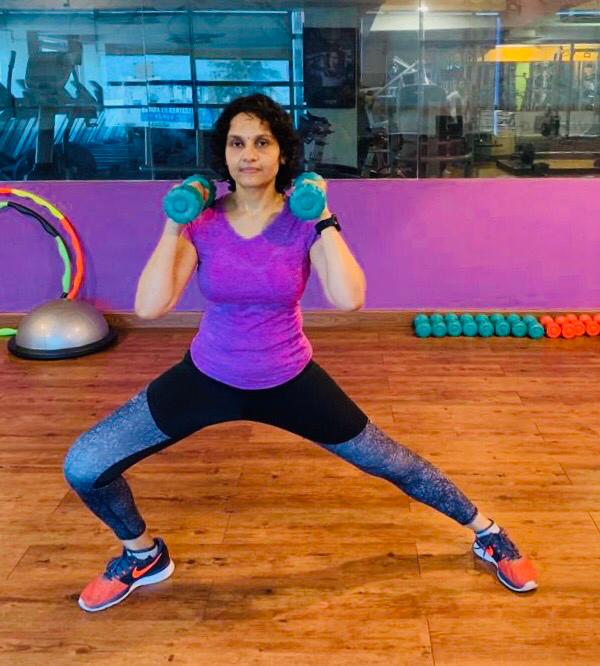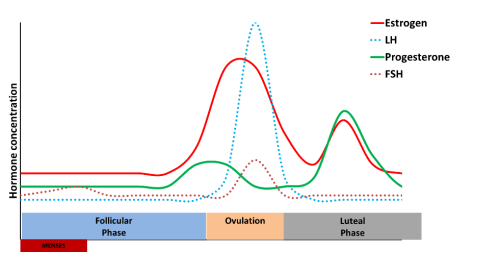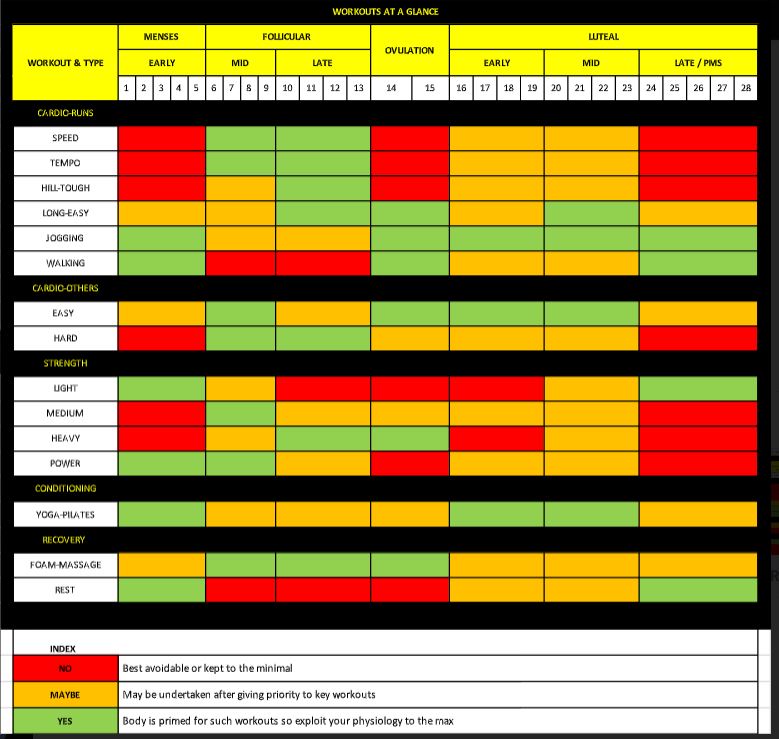The number of women in our running space is growing and it’s a welcome development as they bring colour to an otherwise grey landscape going by the way men attire themselves. On a more serious note, they are helping to raise the bar as the gap between the top performing men and women runners is getting narrower in the longer distances.
While the majority of women runners are happy adopting the casual approach of sheer lacing up and running for fitness, there are several who invest serious time (and energy, money and mental bandwidth) to their sport.
Running is a simple activity but improving on your performance requires some discipline, and to shift to top gear calls for a change in your mind set. Presently most of the high performing women runners follow a mix of cardio – strength – conditioning workouts, and train bloody hard. But it’s likely you are missing a key aspect.
Gender
It’s important to factor your gender when training as men and women have different physiological, hormonal, metabolic and anatomical characteristics. And it’s highly likely that your coach is a male who hasn’t imputed these aspects and doesn’t realise that women are not small men!
Train as suits the physiology of a woman
Men and women are more alike than not, sharing 22 common pairs of chromosomes. But it’s the 23rd pair of sex chromosomes that makes all the difference with women having two X chromosomes and men having one X and one Y chromosome. All differences in muscle mass, heart size and body fat can be accrued to this.
The two major hormones that differentiate men and women are testosterone and oestrogen, with the former much higher in men, the latter in women. You would have noticed how young girls can run as fast as boys till puberty strikes and hormonal factors start to play a role. Testosterone creates taller, muscular males while oestrogen increases fat deposition in the hips of females and the development of breasts. In addition to secondary sexual characteristics, oestrogen plays a variety of roles and several of them have huge ramifications for women runners.
Commonly known differences
Women have smaller shoulders, which makes it more difficult to develop upper-body strength, and wider hips, that cause the femur (thigh bone) to have a more pronounced angle between the pelvis and the knee, ala Q-angle. Note how the elite women runners have narrow hips and small breasts.
“Women runners are at a higher risk for knee injuries; and exert less forward force”
A higher fat % in women, necessary forbirthing, is a disadvantage as fat is dead weight that increases the amount of energy required to run. And as a result of their smaller size, women have smaller hearts implying lesser stroke volume and cardiac output resulting in lower VO2m. Add to that a lower haemoglobin count implying lesser carriage of oxygen to the muscles, a lower responsiveness to carbohydrate loading coupled with higher calorie consciousness results in reduced muscle glycogen.
“Women runners are at a disadvantage for races up to the marathon; and actually at an advantage as the distance increases“.
The circulating concentration of the hormone oestrogen determines the bone mineral density in women, a strong indicator of bone strength. Any condition that reduces oestrogen concentration, like heavy training load, affects bone remodelling and increases the risk of osteoporosis and fractures in women runners.
“Women runners need to be more careful scaling up their training volume”
Less commonly known differences (or publically discussed)
The defining physiological characteristic of a woman is her menstrual cycle. The fluctuating levels of her hormones – oestrogen, progesterone, follicle-stimulating hormone (FSH) and luteinizing hormone (LH) – across her menstrual cycle affects her physiology and influences her body temperature, fluid retention, hydration status and even her breathing. If she adapts her training to sync with her changing physiology, an improvement in performance and more realistic expectations is likely.
Background
Monthly cycles are similar and for simplicity the cycle is usually generalised as being 28 days. A woman’s menstrual cycle may be broadly classified into four phases, menses, follicular, ovulation and luteal.
Menses (Day-1) typically last 5 days across which time her levels of the ovarian hormones oestrogen and progesterone are low. The pituitary hormone FSH is released thatstimulates the maturation of ovarian follicles. With the end of her menses starts the follicular phase when oestrogen level starts to ramp up, peaking around Day 12-14. This sees a surge in the pituitary hormone LH to initiate ovulation around Days 14-15. All through this phase the level of progesterone has remained low.
Now commences her luteal phase when progesterone rises and with it rises her body temperature. Oestrogen initially drops after ovulation before rising again towards the middle of this phase, followed by a drop in both hormones and the restart of the cycle (barring pregnancy). The late luteal phase (premenstrual) is when PMS symptoms like bloating, headache, breast swelling & tenderness, mood swings, fatigue, irritability, food cravings and trouble sleeping may be experienced.
Implications for her training
At varying points across her menstrual cycle the women runner is more prone to specific injuries, to find it a struggle to do high intensity workouts, to find endurance training surprisingly comfortable and even be more adept at lifting weights. There will be some variability among women as regards the duration and how each phase affects her physiologically but broad indicators are as follows.
Menses (Days 1 to 5)
- Overall low hormone levels, with possibility of anaemia
- Energy levels will be reduced, and given the likelihood of cramps, joint and muscle pain, headaches, even insomnia, it’s likely that you would be feeling below par
Training advice is “relaxed movement”
- Schedule more easy running, of modest duration
- Differ the more intense workouts – speed, tempo, hills – to a later date
- If training by HR zone then expect to struggle hitting the higher zones
- Swimming, yoga and other relaxing workouts are good choices
- Strength training is fine as you are less prone to injury now but use lighter weights
- And foresee some social withdrawal tendencies as you look more inwards
Diet to support this phase
- If you suffer from cramps then avoid “gas producing” foods. Magnesium is a muscle relaxant that helps alleviate cramps so binge on nuts and seeds, and leafy greens. Minimise caffeinated drinks to prevent excess water loss and compensate for any iron shortage by eating more red meat, green leafy vegetables, lentils and seeds
Follicular phase (Days 6 to 14)
- The hormone oestrogen and FSH levels are high
- Body readily breaks down glycogen for quick energy leaving you feeling strong and driven
- Tolerance to pain is reduced so push the limits
Training advice is “go hard, go strong”
- Schedule the more intense speed, tempo and hill workouts
- Modest long runs are fine as well
- Strength training is advised as muscle gains are highest across this phase
- Be mindful of proper technique and the chosen weights as injury risk – especially tendon and ACL tear – is high. More so in the days closer to ovulation. So factor in a longer warm-up, not over-stretching and back off at any sign of joint discomfort
Diet to support this phase
- Hormone levels begin to rise and so digestive health is very important to support their production. So consume more probiotic rich food (curd), omega-3 fats (oily fish, nuts and seeds) and a range of coloured vegetables
Ovulation (Day 14 or 15)
- Energy levels peak now
- A lower heart rate at faster speeds, faster recovery and overall “wonder woman” sensation
- And with progesterone being low, the body tolerates higher levels of pain
Training advice is “up the strength”
- Strength training comes easily and it’s a good time to hit the heavier weights
- Be cautious on cardio activities as body doesn’t take too well to impact now
Diet to support this phase
- As core body temperature starts to shoot up, it’s smart to ensure high intake of salads, smoothies and other cooling foods
Luteal phase (Days 16 to 28)
- The hormone progesterone rises, and through its action there is a rise in core temperature which increases the threshold for heat dissipation making hot conditions feel more intolerable
- There is a second surge of oestrogen that suppresses gluconeogenesis, and makes fat the preferred energy source across this phase
- The combined action of these two hormones makes any activity a herculean effort. Thermo-regulation is difficult, breathing is more challenging, heart rate hiked several notches and access to quick energy is depressed
- It’s not uncommon to question your running abilities but that would be a kneejerk reaction
- Then the final days may see PMS which can include bloating, cramps, muscle tenderness, GI upset, fatigue, insomnia, mood changes, cravings, and more. Some weight gain is common and could impact performance
Training advice is “be adaptable”
- Schedule long but easy runs to leverage on your improved fat metabolism. Just be mindful to pay heed to thermo-regulation addressed through gradual acclimatisation as well as hydrating early and often. Consider pre-loading on sodium, across the previous evening meal or in the early morning of the workout/race
- Speed and tempo runs will likely be a struggle, and kept to the minimum. Don’t depend on muscle glycogen stores but consciously consume external carbs to assist these workouts
- Keep strength training to minimal, or at a basic level
- Switch to yoga or Pilates to relax the body if experiencing PMS
- Ideally to plan your recovery week (or holiday travel) across this phase
- If training by HR zone then expect to hit the higher zones soon
Diet to support this phase
- Food craving, usually for sweet things, often occurs across PMS days. Restrict intake of salty foods as it adds to the already bloated feeling. Consider more fibrous foods – whole grains, fruits and vegetables – to build satiety and reduce cravings. Overall to eat little more “good fats” through foods like oily fish, nuts, seeds, olive oil, avocado and olives and magnesium-rich foods like nuts and seeds, and leafy greens.
In a nutshell
The older woman runner
Menopause is a fact of life though as an active runner, you will handle its side effects far easier. Just accept that it will affect your performance and make some adjustments in your training. And if it’s any comfort, remember that you will likely be competing in an older age group and possibly improve your chances of podium!
Menopause is the time when women have their last menstrual cycle and occurs because adequate amounts of oestrogen are not produced. And with it increases your risk of osteoporosis and heart disease. Perimenopause refers to the time before menopause when your menstrual cycles start to get irregular and hot flashes experienced. And postmenopause is the time after menopause, when in addition to stated symptoms, the physical effects of aging become more apparent.
Across your training runs you will experience fatigue and difficulty running in warmer weather. A slower pace, increased aches, longer recovery time and declining energy as well. Factor these into your training, and mind set, to make your overall running experience more manageable. Just continue to stay active as it’s precisely your physical activeness that is keeping the side effects to a more tolerable level.






